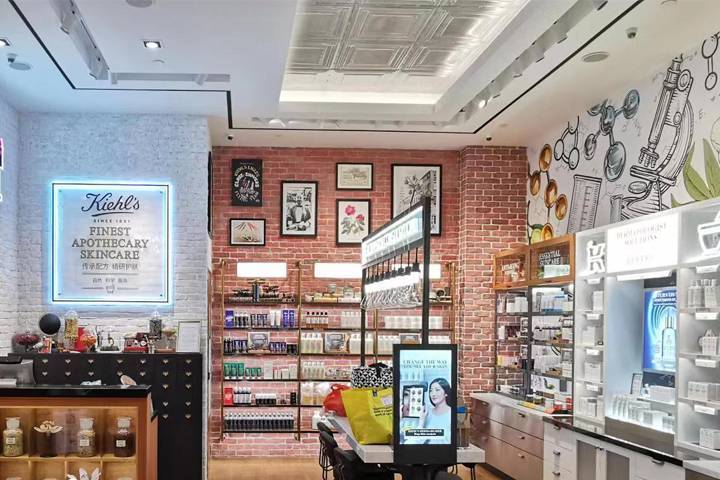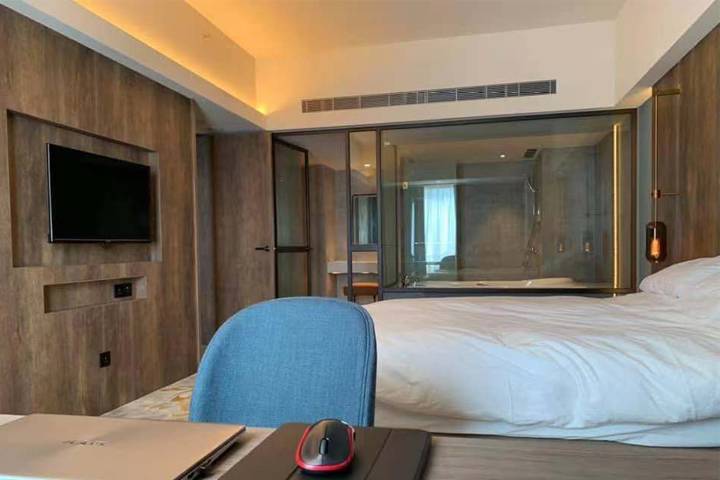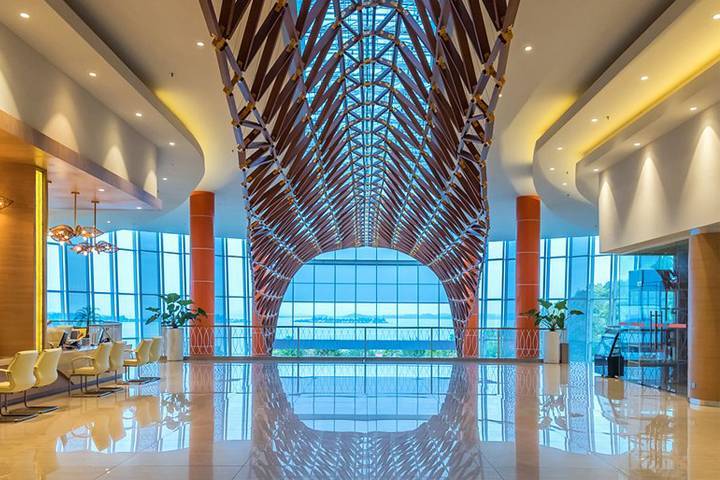With the increasing popularity of no main light design, spotlights have also become designers’ favorite. High-quality spotlights not only provide a uniform level of illumination, but also have the advantages of good heat dissipation performance, high CRI (Color Rendering Index), flicker-free and deep anti-glare function, etc. Therefore, we can use high-quality spotlights to create perfect lighting effects for various scenes.
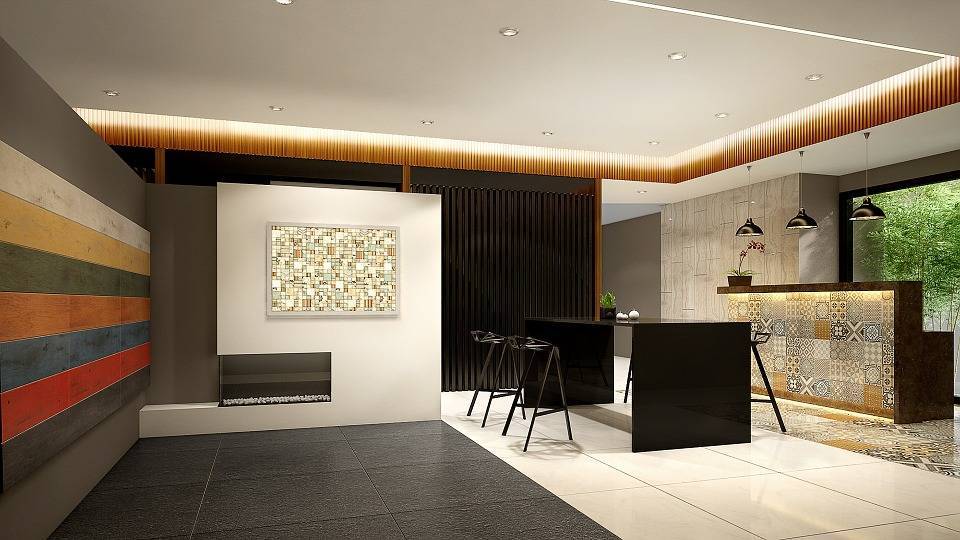
01 By choosing anti-glare spotlights, we want to achieve the effect which could be literally translated to “seeing the light but not the light”. The former “light” means the light beam, and the latter refers to the glowing light source.

First of all, what is glare?
A person’s natural line of sight is roughly between 30° above the horizontal at the level of the eyes and 60°below that.
Glare is the loss of visual performance or discomfort produced by an intensity of light in the visual field greater than the intensity of light to which the eyes are adapted. Simply put, glare occurs when too much light enters your eye and makes you uncomfortable and subconsciously try to close your eyes.
Two common types of glare: direct glare and reflected glare.

Direct glare is the result of high brightness from a light source in the field of vision. Like the following example, luminaires are almost completely exposed in the field of view. Direct glare can be very dazzling and harsh.

Reflected glare results from light reflecting off surfaces that are smooth and shiny, such as TV screens, tiles, and mirrors, etc. In the case below, the tiles reflect the light from the chandelier, causing reflected glare.

As can be seen from above, to achieve the effect of “to see the light but not the light”, not only the light source itself has to be considered, but also the lighting layout. Studies have shown that long-term glare can lead to eyestrain, visual fatigue, and even cause the loss of human eyesight, irreversible damage to eyes . So, it is necessary to choose the right anti-glare light. Now, let’s get acquainted with different types of anti-glare lights and the indicator which is the measurement of calculating glare from luminaires.
02 Basically, there are six types of anti-glare spotlights on the market as follows:

1. Deep-hidden anti-glare light
As the name suggests, it hides the light source deep in the lamp body, and the lamp cup blocks part of the light source so as to limit direct glare.

Normally, the height of a deep-hidden anti-glare light body is more than 55mm. Some would even reach a height of 100mm. Therefore, it is necessary to reserve a height of 60-110mm for the suspended ceiling accordingly.
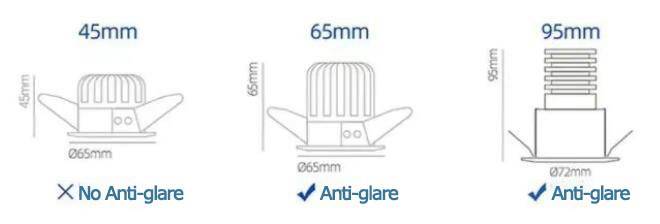
2. Blackcup anti-glare light
The funnel-shaped lamp cup can concentrate light. A common lamp cup adopts the electroplating process, which makes it seem like a smooth silver surface. The emitted light is reflected by the lamp cup.
Different kinds of lamp cups lead to different lighting effects.

To replace traditional electroplated lamp cup with the black lamp cup can reduce light leakage which is a potential cause of glare. Furthermore, the matte black lamp cup has a better anti-glare function than the glossy one. However, due to the reduction of reflected light, there is a certain loss of the brightness.

3.Honeycomb anti-glare light

Honeycomb anti-glare lights have a metallic honeycomb net added in the lamp cup to partly block and diffuse the emitted light, consequently reduce the glare. Similarly, good anti-glare performance with a brightness loss issue.

4.Optically anti-glare light

The lamp cup of an optically anti-glare light is shaped into diamond facets, by this optical design, the emitted light would be reflected multiple times and prevented from directly entering the eyes. The advantage of the optically anti-glare light is that it can reduce glare without losing brightness.
5.Frosted lampshade anti-glare light

Frosted lampshades, such as frosted glass, textured glass, frosted acrylic, etc. The frosted lampshade would cause loss of a certain amount of brightness. The advantage of this anti-glare type is that even if viewers move themselves right under the lamp and look up to the luminaire, they won’t be exposed to the direct light (although, if the brightness is at an extremely high level, they would still feel very uncomfortable).
6.Multiple anti-glare light

A combination of two or more anti-glare functions. the more measures are taken to reduce glare, the better performance the luminaire will show.
“Double anti-glare light ” and “triple anti-glare light” generally refer to how many anti-glare designs are applied to the corresponding product. The spotlight below applies “triple anti-glare” means of “deep-hidden” , “honeycomb” and “optically ”.

The anti-glare spotlights provide a visual environment of “seeing the light but not the light”, where people wouldn’t easily get tired because of the light beam. The eyes of the elderly and children can be protected when reading. At the same time, the overall lighting in the room becomes more comfortable.
In addition, the anti-glare effect of spotlights is the result of comprehensive factors, which are related to anti-glare design, light source type, beam angle, etc. So, what is the effect of different angles of light? The common beam angles are 15°, 24°, and 36°, and the rare ones are 6°, 8°, 10°, 12°, 45°, 60°, and the angle of polarization.

For general household lighting, you only need to refer to the UGR (Unified Glare Rating) value of the light, which is regarded as an anti-glare indicator.
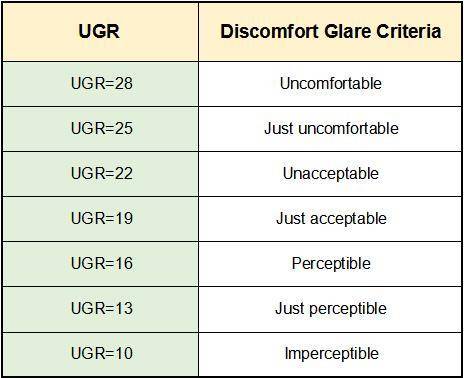
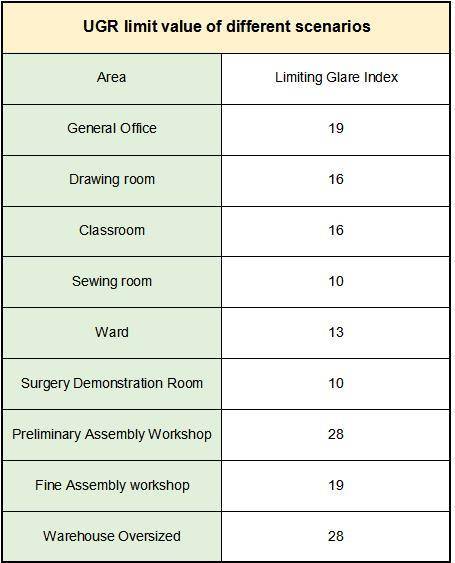
Strictly speaking, UGR can only be calculated for an indoor lighting installation. It cannot be calculated for an exterior installation (such as street lighting) and it cannot be calculated for a light fitting on its own. Therefore, It is all right to say that the UGR of a space is less than 19 or 20, but inaccurate to describe a luminaire in this way.

Here is the formula for calculating UGR.
It seems very complicated, fortunately, we don’t really have to calculate it, just focus attention on the influencing factors of these four variables.
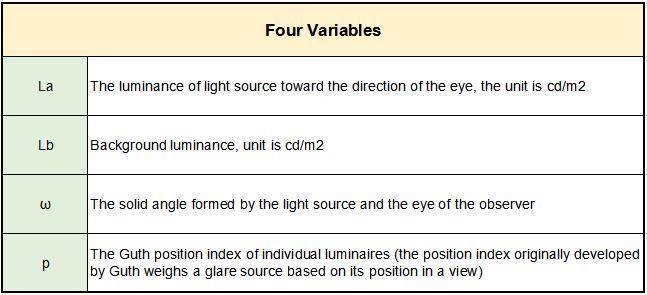
It can be seen that La, p are related to the environment, and Lb and ω are related to lamps. The larger Lb and P, the smaller UGR value; the smaller La and ω, the smaller UGR value.
Therefore, only by reducing the exposed area of the light source, can we effectively reduce UGR. And this is exactly what we do in deep-hidden anti-glare design, that is, increasing the shading angle, although this will affect the beam angle.

The national standard, “GB50043-2004 Architectural Lighting Design Standard” has relevant regulations on the UGR value of different scenarios. UGR <25, UGR <22 and UGR < 19 are commonly used. If you want to achieve a better anti-glare effect for household lighting, it is recommended that you should choose a light source with UGR < 19. Of course, there is no need to look for the extremely low UGR . For home space, UGR < 13 would be good enough.

